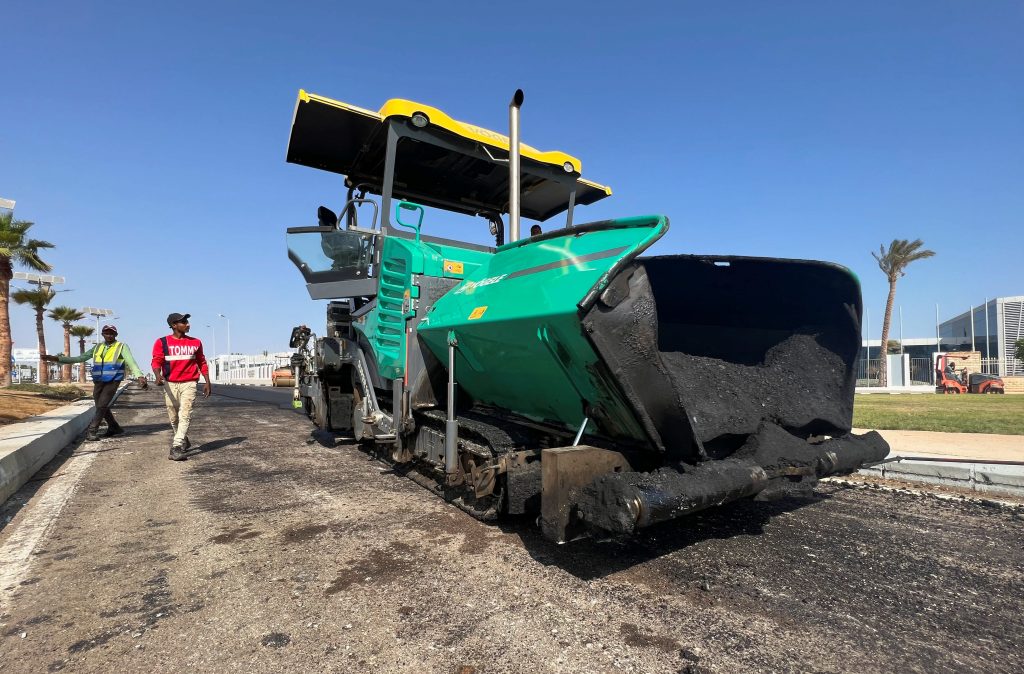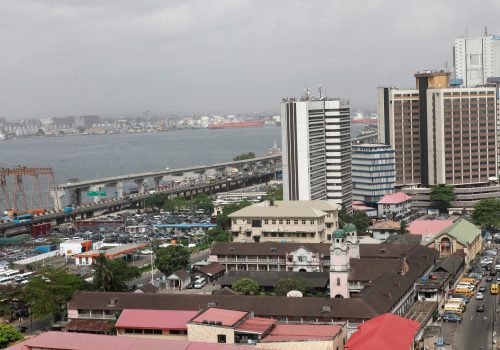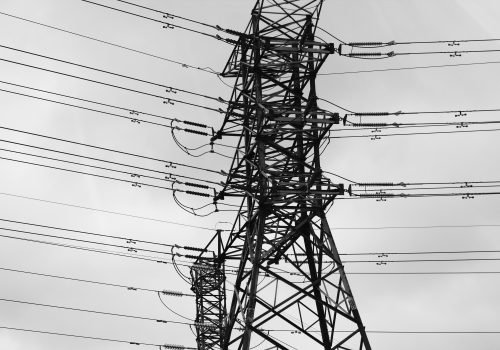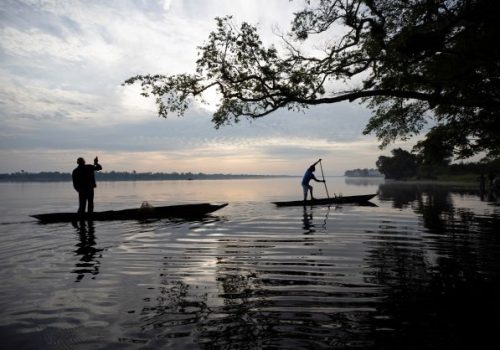The European Commission recently unveiled eighty-seven projects—including everything from rapid bus transit systems to solar plants and data centers—as part of its Global Gateway initiative to support infrastructure, health, education, and climate-change adaptation in regions across the world.
At the same time, the African continent faces a wide infrastructure investment gap, estimated at more than one hundred billion dollars annually, according to the African Development Bank.
This gap affects both the continent’s global competitiveness and many Africans’ poor living conditions. Yet Africa has great potential, with an economic-growth rate that is expected to be surpass the global average in 2023 and 2024; high renewable-energy potential; and young, dynamic, and innovative populations.
To turn Africa’s potential into reality, investing billions—from African governments, the international community, and the private sector—in infrastructure will be crucial.
Global Gateway, the European Union’s (EU) answer to China’s Belt and Road Initiative, plans to mobilize up to 300 billion euros (about $331 billion) in public and private investments by 2027, with half designated for African countries. Even though Global Gateway is providing the billions that Africa needs to harness its potential and close its infrastructure gap, success is not guaranteed. For it to be a success, several conditions must be met.
A priority partnership
Global Gateway’s prioritization of Africa is quite plain to see, even beyond the fact that half of the planned funds are going toward the continent. Global Gateway is embedded in the renewed EU-Africa relationship. In February 2022, European Commission President Ursula von der Leyen and Senegalese President Macky Sall, who was then the African Union (AU) president, announced that the Africa-Europe program would be the very first regional plan under Global Gateway.
This announcement took place a few days before the EU-AU summit that set out to establish a renewed EU-Africa relationship based on a balanced and well-defined appreciation of interests and responsibilities of both partners. Going into the summit, the parties expected a “renewed, modernized, and more action-oriented partnership.” Global Gateway, as a partnership itself, checks those boxes.
For the EU, it is crucial to be perceived by African partners as delivering on promises made at the EU-AU summit. With Global Gateway, it seems as though the EU is making another effort to be a reliable partner that makes commitments that have concrete effects on the ground. That will be important for the EU as China and Russia continue to present competing narratives and models of international order, political organization, and values.
Aligning with Africa’s 2063 vision
For Global Gateway’s projects to have an impact and to live up to the promises of the renewed EU-AU partnership, they have to align with the goals and priorities of the AU’s Agenda 2063. The agenda, adopted in 2015, aims to develop infrastructure, improve energy access, build an integrated network of transport infrastructure, and connect the African continent to the rest of the world.
So far, Global Gateway’s initial projects seem in line with the Agenda. The EU intends to invest in particular in energy, digital, and transportation infrastructure—doing so is a real emergency in Africa. The bloc also intends to accelerate the green transition, bolster health systems, and support education and training. Projects that tackle these issues include the construction of a EurAfrica Gateway Cable, a submarine fiber-optic cable connecting Africa with the EU; a Strategic Transport Corridor between Cabo Verde, Senegal, and the Ivory Coast; and solar power plants in Niger. Global Gateway also aims to boost youth entrepreneurship by financing the launch of high-potential startups and to more generally create jobs for Africa’s growing youth population. The VaMoz Digital program, for example, plans to invest in digital literacy and skills for youth in Mozambique.
How China compares
Chinese investment always looms large, especially considering that China has mobilized over two trillion dollars for almost four thousand investment and construction projects abroad since 2005. Overall, China is far ahead of the EU in overseas investments.
But looking only at Africa, and more especially at Sub-Saharan Africa, the picture is not so clear. China signed over $303 billion in investments and construction contracts between 2006 to 2020. From this perspective, the EU’s 150 billion euros ($165 billion) over the course of only five years is certainly significant, especially considering that the investments made by EU member states outside of the Global Gateway initiative should also be added to this amount in totaling the EU’s contributions.
To reach its ambitious spending goals, the EU will need to rely on a range of financial instruments such as grants, capital investments, and guarantees; it will need to mobilize, among other tools, the European Fund for Sustainable Development+ (which is overseen by a financial tool called Global Europe: Neighbourhood, Development and International Cooperation Instrument) as well as the European Investment Bank.
While China gets called out for its predatory loan practices—and especially its controversial resource-backed lending model—and for neglecting environmental health or human rights in its investments, Global Gateway aims to comply with the highest environmental and social standards and to respect the EU’s democratic values. The program is rooted in EU values, and especially transparency, sustainability, and good governance.
While the program is rooted in EU values, it is not just a one-sided European idea or an investment project; it is an investment in a relationship. In this regard, Global Gateway differs from traditional development policies by placing a greater focus on embedding the project in a political and strategic relationship built on partnership principles. The initiative aims to help African partners build quality and sustainable infrastructure to strengthen their resilience and their strategic autonomy in the energy, technological, health and economic fields; in doing so, it could be the foundation of long-term African growth.
Conditions for success
Critics of Global Gateway argue that the initiative has overly long timelines, that the EU communicates poorly about it, and that the goals are difficult to discern; some critics also say that some of the funding was already mobilized for existing projects and that, in the end, the initiative amounts to no more than rebranding.
It is partly true that the EU often has difficulties in explaining its programs and initiatives, often opting for administrative jargon. It is also indeed the case that Global Gateway serves as an umbrella for some existing projects—which is understandable given that it takes more than a year to launch such infrastructure projects. However, Global Gateway scales up existing major infrastructure projects, speeds up their implementation, and provides a much-needed political impetus to unlock greater funding. African partners should take advantage of this to close the infrastructure gap in a sustainable way.
For Global Gateway to succeed, European and African partners must do the following:
- The EU must deliver on making the Global Gateway a renewed, and action-oriented partnership in line with the AU-EU summit’s objectives. The EU should nurture its relationship with African countries by delivering concrete and ambitious projects that contribute to Africa’s long-term economic growth. Both sides should recognize that this is not just a business issue: It is a political one.
- African partners must seize Global Gateway to close the continent’s infrastructure gap. But as it will be important to mobilize all investment needed—and to not come up short on funds—African partners should be more proactive in identifying their needs and on broadcasting successes to maintain the political momentum for the initiative.
- European and African partners should ensure that each project is compliant with the highest environmental and social-norms standards so that they contribute to green and resilient growth in Africa. Robust reporting will be crucial. Global Gateway projects have to be seen as an opportunity to reconcile economic development with climate-change mitigation and adaptation.
- Since Global Gateway is designed to leverage private fundings, African partners should build on this opportunity—in which the private sector is already investing in Africa—to unlock even more private-sector financing, beyond the initiative. African partners should use these investments to supplement the financing of green-growth and resilience projects.
Emilie Bel is a nonresident fellow with the Atlantic Council’s Africa Center and deputy to the director of public affairs and head of international affairs at the French Insurance Federation.
Related content
Image: Employees work on a road in front of a conference center ahead of November's COP27 climate summit, in Sharm El-Sheikh, Egypt, October 20, 2022. REUTERS/Sayed Sheasha



